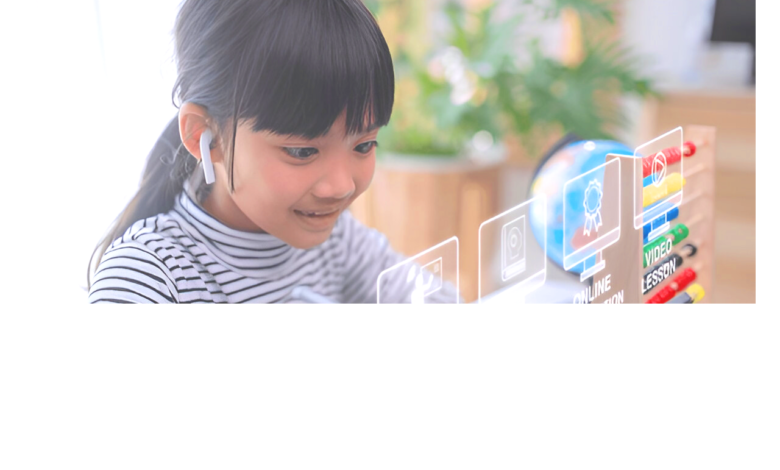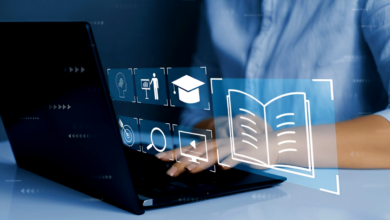
The Future of Ed-Tech: How technology is transforming education is a topic of immense importance in today’s rapidly evolving digital landscape. Education technology, or Ed-Tech, has revolutionized the way students learn, teachers instruct, and institutions operate. With the integration of digital tools, artificial intelligence, and online learning platforms, teaching is becoming more accessible, personalized, and efficient.
This article explores the advancements in Ed-Tech, how it is shaping the teaching sector, and what the future holds for students and educators alike. By examining key trends such as artificial intelligence, virtual and augmented reality, and adaptive learning technologies, we can gain insight into how these innovations will redefine the learning experience for future generations.
The Rise of Online Learning
Online learning has become one of the most significant developments in education technology. With the internet providing instant access to educational content, students can now learn from anywhere in the world. Massive Open Online Courses (MOOCs), platforms like Coursera, Udemy, and Khan Academy, and university-based online degree programs have made teaching more accessible than ever before.
E-learning platforms offer flexibility, allowing learners to study at their own pace while also catering to diverse learning styles. The COVID-19 pandemic accelerated the adoption of online learning, proving that virtual classrooms can be just as effective as traditional ones when properly structured. The rise of cloud-based learning management systems (LMS) has further enhanced online education by providing teachers and students with interactive tools for collaboration, assessment, and engagement.
Artificial Intelligence in Education
Artificial intelligence (AI) is playing a crucial role in transforming teaching by personalizing the learning experience. AI-powered tools analyze students’ performance, adapt to their learning styles, and provide customized recommendations for improvement. Intelligent tutoring systems, such as Carnegie Learning and Squirrel AI, use data-driven insights to offer personalized lessons tailored to each student’s strengths and weaknesses.
AI-driven chatbots and virtual assistants help answer students’ queries in real-time, reducing the burden on educators while ensuring continuous support. Additionally, AI is being used to automate grading systems, saving time for teachers and allowing them to focus on more critical aspects of education. The integration of AI in classrooms is paving the way for more efficient and individualized learning experiences.
Artificial Intelligence (AI) is playing a transformative role in teaching, revolutionizing the way students learn, teachers instruct, and institutions manage academic operations. By leveraging advanced algorithms, AI enhances personalization, efficiency, and accessibility, making education more effective and engaging for learners worldwide.
- Personalized Learning – One of the most significant impacts of AI in education is its ability to personalize learning experiences. AI-powered platforms analyze student performance, learning habits, and progress to tailor lessons to individual needs. Unlike traditional one-size-fits-all methods, these systems adapt the difficulty level and instructional approach based on the student’s strengths and weaknesses. Intelligent tutoring systems provide real-time feedback and targeted recommendations, helping students improve at their own pace. AI also enables differentiated instruction, allowing educators to address diverse learning needs within a single classroom.
- Automated Administrative Tasks – AI significantly reduces the administrative workload for teachers and educational institutions. Tasks such as grading assignments, tracking attendance, and scheduling classes can be automated, freeing up valuable time for educators to focus on instruction and student engagement. AI-driven chatbots assist students with common inquiries, such as course registration, deadlines, and exam schedules, reducing the burden on administrative staff. Automation in teaching not only enhances efficiency but also minimizes human errors in record-keeping and evaluation.
- Smart Content Creation – AI contributes to the development of high-quality educational content by generating interactive textbooks, quizzes, and study materials. AI-powered platforms can create personalized study guides and adaptive learning modules that cater to each student’s needs. Additionally, AI enhances learning experiences through virtual and augmented reality (VR/AR), allowing students to explore complex concepts through immersive simulations. For example, VR can transport students to historical events, scientific laboratories, or mathematical models, making abstract ideas more tangible and engaging.
- Enhanced Accessibility – AI-driven tools play a crucial role in making teaching more inclusive and accessible to students with disabilities and language barriers. Speech-to-text and text-to-speech applications assist students with visual or auditory impairments, ensuring they can participate fully in educational activities. AI-powered translation tools break down language barriers, enabling students from different linguistic backgrounds to access learning materials in their native languages. These advancements help create a more equitable learning environment where all students can thrive.
- Predictive Analytics for Student Success – AI enables educational institutions to analyze vast amounts of student data to identify patterns and predict outcomes. Predictive analytics help educators recognize at-risk students early, allowing for timely interventions to improve retention and academic success. By analyzing attendance records, assignment submissions, and performance trends, AI can alert teachers to students who may need additional support. Institutions can use these insights to develop targeted mentoring programs, tutoring services, and personalized academic plans.
- Gamification and Engagement – AI enhances student engagement through gamification and adaptive learning. AI-driven educational games and simulations make learning more interactive and enjoyable, keeping students motivated. Adaptive assessments adjust in real time based on student responses, ensuring that learners remain challenged but not overwhelmed. AI can also analyze engagement patterns to determine what methods work best for different students, optimizing instructional strategies. Gamification elements such as rewards, leaderboards, and interactive challenges further encourage participation and knowledge retention.
- Lifelong Learning and Career Guidance – AI extends beyond traditional education to support lifelong learning and career development. Online learning platforms like Coursera, Duolingo, and Udacity use AI to recommend courses based on individual preferences, skill levels, and career goals. AI-powered career guidance systems analyze students’ interests, academic performance, and job market trends to suggest suitable career paths. This ensures that learners receive personalized recommendations that align with their ambitions and the evolving job market.
As AI continues to advance, its impact on teaching will only grow, making learning more efficient, inclusive, and adaptable. While AI cannot replace human teachers, it serves as a powerful tool that enhances instruction, streamlines administrative tasks, and provides students with personalized learning experiences. By integrating AI into teaching responsibly and ethically, we can create a future where learning is more accessible, engaging, and tailored to the unique needs of every student.
Virtual and Augmented Reality in Education
Virtual Reality (VR) and Augmented Reality (AR) are revolutionizing education by providing immersive learning experiences. These technologies enable students to engage with educational content in a more interactive and engaging manner. For example, VR headsets allow students to take virtual field trips to historical sites, explore the human body in 3D, or conduct complex scientific experiments without being in a physical lab.
AR enhances traditional learning by overlaying digital content onto the real world, making subjects like science, math, and history more visually appealing. Applications like Google Expeditions and Microsoft HoloLens have already been adopted in classrooms to create dynamic learning environments. As VR and AR technologies continue to advance, they will play an increasingly vital role in shaping modern teaching.
Adaptive Learning and Gamification
Adaptive learning technology uses algorithms to analyze students’ progress and adjust the curriculum accordingly. This ensures that learners receive personalized content based on their strengths and areas that need improvement. Platforms like DreamBox, Knewton, and Smart Sparrow utilize adaptive learning to create customized pathways for students, enhancing their comprehension and retention rates.
Gamification, or the use of game-like elements in teaching, has also gained popularity as an effective way to increase student engagement. By incorporating points, badges, leaderboards, and challenges, gamified learning makes education fun and interactive. This approach has been widely adopted in language learning apps like Duolingo and educational games designed for STEM subjects.
Blockchain in Education
Blockchain technology is making its way into teaching, offering secure and transparent ways to verify academic credentials and store student records. Digital diplomas and certificates stored on blockchain networks prevent fraud and make it easier for employers to verify qualifications.
Blockchain also supports decentralized learning platforms, where students can have more control over their educational achievements and share verified credentials globally. As this technology continues to evolve, it is expected to streamline administrative processes and increase trust in digital certifications.
The Future of Ed-Tech: What’s Next?
The future of Ed-Tech promises even more groundbreaking innovations. The integration of 5G networks will enhance real-time learning experiences by providing high-speed connectivity. Wearable technology, such as smart glasses and biometric devices, will further personalize learning by tracking students’ focus levels and cognitive engagement.
Moreover, advancements in neuroscience and brain-computer interfaces (BCIs) could revolutionize learning by directly enhancing cognitive functions. AI-powered mentors may soon become a staple in classrooms, providing real-time feedback and guidance to students in ways that were previously unimaginable.
Read More: Using Technology for Productive Studying: Apps and Tools for Success
Conclusion
The Future of Ed-Tech: How technology is transforming education is evident in the rapid advancements shaping modern learning experiences. From online learning platforms to AI-driven personalized teaching, virtual reality, adaptive learning, and blockchain, technology is creating a more inclusive, engaging, and effective teaching system.
As we move forward, educators, institutions, and policymakers must embrace these innovations to prepare students for a rapidly changing world. The potential of Ed-Tech is limitless, and by harnessing its power, we can create a smarter, more connected, and more efficient educational landscape for generations to come.
FAQs
1. How is AI changing education?
AI is personalizing learning by analyzing student performance, providing customized recommendations, automating grading, and offering real-time assistance through chatbots and virtual tutors.
2. What are the benefits of online learning?
Online learning provides flexibility, accessibility, cost-effectiveness, and a wide range of course options, enabling students to learn at their own pace from anywhere in the world.
3. How does VR enhance teaching?
VR creates immersive learning experiences by allowing students to explore virtual environments, conduct experiments, and interact with educational content in a hands-on manner.
4. What is adaptive learning?
Adaptive learning uses algorithms to adjust educational content based on individual student progress, ensuring a personalized learning experience tailored to each learner’s needs.
5. How can blockchain improve teaching?
Blockchain enhances teaching by securely storing academic records, preventing fraud, enabling digital diplomas, and providing transparent credential verification for students and employers.







